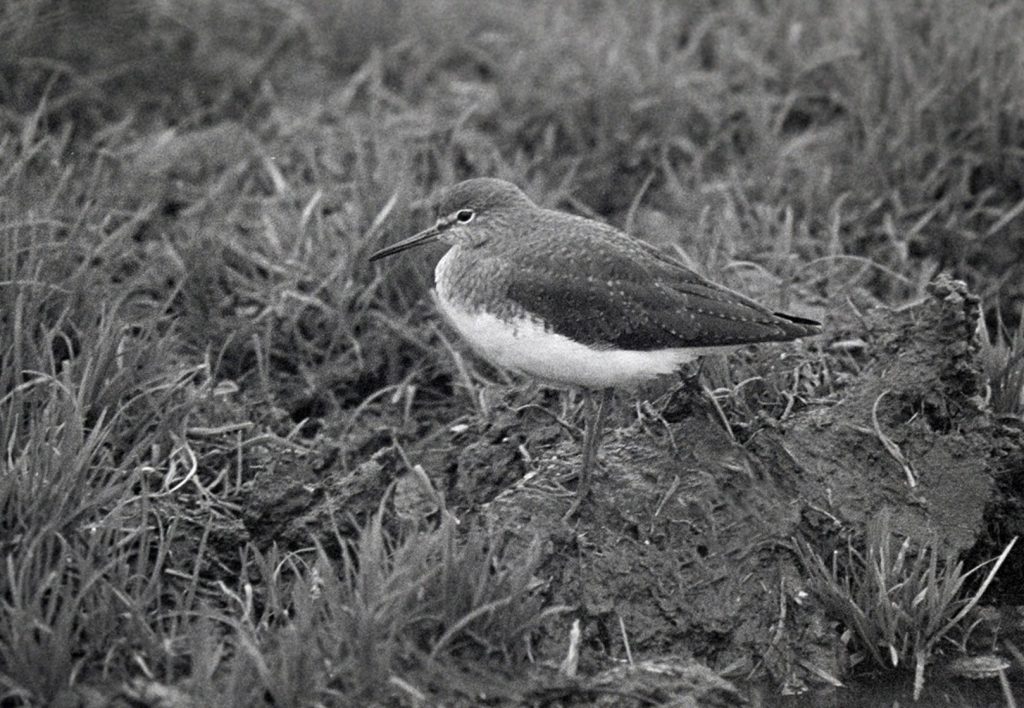Green Sandpiper at Tarholm, 1975
The possibility of Green Sandpipers over-wintering in South Scotland had occurred to a few Ayrshire birders during the 1970s, with the pattern of increasingly regular winter sightings suggesting the same birds returning each year to specific locations within the county. Although primarily an autumn migrant, there were only 5 records of the species prior to the 1960s according to Richards’ Checklist of Ayrshire Birds (1966). Had they simply gone undetected?
Between 1975 and 1982 one bird returned faithfully to the River Ayr near Tarholm Bridge (NS393220). It usually frequented the gravel and mud of the river bank but, when the river ran high, it moved to a small puddle near the roadside at NS388216. The fact that this small water body was really close to the road, and also that the bird tended to ignore humans (if they remained in their cars), meant that it became a regular attraction on that stretch of road. It was also fairly easy to photograph – even in the days of black and white!

advantage of being able to return quickly to their Scottish breeding grounds by enduring the relatively mild winters of southern Scotland, came the thought that, maybe, “our” Green Sandpiper could be benefitting from the same strategy. Green Sandpipers start their breeding season fairly early, and are returning to their Scandinavian breeding grounds by late March. Getting the jump on your rivals might just be worth the risk of over-wintering further north. A small Scottish breeding population had been suspected for some time, with proven breeding in 1959. However, the numbers remain small, partly due to it being a difficult bird to find.
As successive winters passed, other “regular” Green Sandpiper winter sightings emerged at places like Warwickdale/Springside and, more generally, around Irvine. More recently, winter records would suggest an Ayrshire population of between 1 and 5 birds, but observer coverage would need to be much more extensive to be sure of that. Either way, the Tarholm individual of 1975 onwards presented observers with a rare opportunity to closely observe a normally flighty species, as well as raising some intriguing questions about its provenance.
Angus Hogg
April 2023